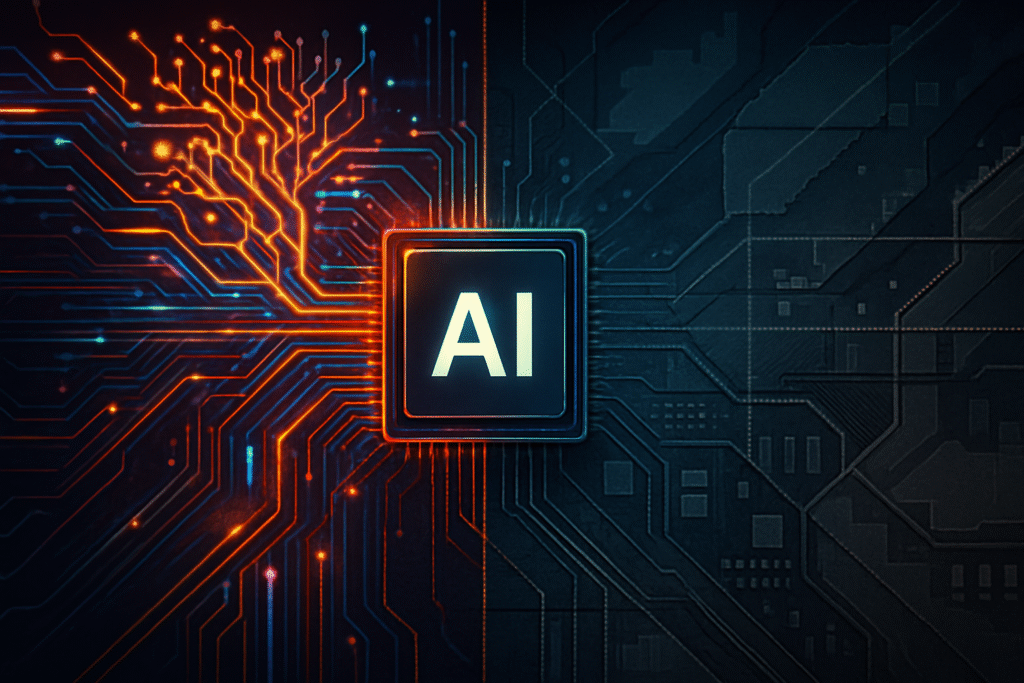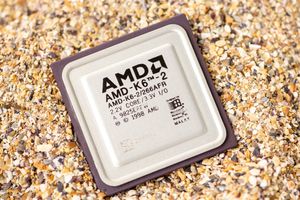
The semiconductor industry, often hailed as the bedrock of modern technology, is currently navigating a complex and increasingly bifurcated landscape. While the insatiable demand for artificial intelligence (AI) chips propels certain segments to unprecedented heights, other, more traditional areas are facing significant headwinds. Power Integrations (NASDAQ: POWI), a key player in high-voltage power conversion, stands as a poignant example of this divergence. Despite a generally optimistic outlook for the broader semiconductor market, Power Integrations' recent financial performance and stock trajectory underscore the challenges faced by companies not directly riding the AI wave, offering a stark indication of the industry's evolving dynamics.
As of Q3 2025, Power Integrations reported a modest 9.1% year-over-year revenue increase in Q2 2025, reaching $115.9 million, yet provided a soft guidance for Q3 2025. More concerning, the company's stock has seen a significant decline, down approximately 37.9% year-to-date and hitting a new 52-week low in early October 2025. This performance, contrasted with the booming AI sector, highlights a "tale of two markets" where strategic positioning relative to generative AI is increasingly dictating corporate fortunes and market valuations across the semiconductor ecosystem.
Navigating a Labyrinth of Challenges: The Technical and Economic Headwinds
The struggles of companies like Power Integrations are not isolated incidents but rather symptoms of a confluence of technical, economic, and geopolitical pressures reshaping the semiconductor industry. Several factors contribute to this challenging environment, distinguishing the current period from previous cycles.
Firstly, geopolitical tensions and trade restrictions continue to cast a long shadow. Evolving U.S. export controls, particularly those targeting China, are forcing companies to reassess market access and supply chain strategies. For instance, new U.S. Department of Commerce rules are projected to impact major equipment suppliers like Applied Materials (NASDAQ: AMAT), signaling ongoing disruption and the need for greater geographical diversification. These restrictions not only limit market size for some but also necessitate costly reconfigurations of global operations.
Secondly, persistent supply chain vulnerabilities remain a critical concern. While some improvements have been made since the post-pandemic crunch, the complexity of global logistics and increasing regulatory hurdles mean that companies must continuously invest in enhancing supply chain flexibility and seeking alternative sourcing. This adds to operational costs and can impact time-to-market for new products.
Moreover, the industry is grappling with an acute talent acquisition and development shortage. The rapid pace of innovation, particularly in AI and advanced manufacturing, has outstripped the supply of skilled engineers and technicians. Companies are pouring resources into STEM education and internal development programs, but this remains a significant long-term risk to growth and innovation.
Perhaps the most defining challenge is the uneven market demand. While the demand for AI-specific chips, such as those powering large language models and data centers, is soaring, other segments are experiencing a downturn. Automotive, industrial, and certain consumer electronics markets (excluding high-end mobile handsets) have shown lackluster demand. This creates a scenario where companies deeply integrated into the AI value chain, like NVIDIA (NASDAQ: NVDA) with its GPUs, thrive, while those focused on more general-purpose components, like Power Integrations in power conversion, face weakened order books and increased inventory levels. Adding to this, profitability concerns in AI have emerged, with reports of lower-than-expected margins in cloud businesses due to the high cost of AI infrastructure, leading to broader tech sector jitters. The memory market also presents volatility, with High Bandwidth Memory (HBM) for AI booming, but NAND flash prices expected to decline due to oversupply and weak consumer demand, further segmenting the industry's health.
Ripple Effects Across the AI and Tech Landscape
The divergence in the semiconductor market has profound implications for AI companies, tech giants, and startups alike, reshaping competitive landscapes and strategic priorities.
Companies primarily focused on foundational AI infrastructure, such as NVIDIA (NASDAQ: NVDA) and Broadcom (NASDAQ: AVGO), are clear beneficiaries. Their specialized chips and networking solutions are indispensable for training and deploying AI models, leading to substantial revenue growth and market capitalization surges. These tech giants are solidifying their positions as enablers of the AI revolution, with their technologies becoming critical bottlenecks and strategic assets.
Conversely, companies like Power Integrations, whose products are essential but not directly tied to cutting-edge AI processing, face intensified competition and the need for strategic pivots. While power management is crucial for all electronics, including AI systems, the immediate growth drivers are not flowing directly into their traditional product lines at the same explosive rate. This necessitates a focus on areas like Gallium Nitride (GaN) technology, as Power Integrations' new CEO Jennifer Lloyd has emphasized for automotive and high-power markets, to capture growth in specific high-performance niches. The research notes that Power Integrations' primary competitors include Analog Devices (NASDAQ: ADI), Microchip Technology (NASDAQ: MCHP), and NXP Semiconductors (NASDAQ: NXPI), all of whom are also navigating this complex environment, with some exhibiting stronger net margins and return on equity, indicating a fierce battle for market share and profitability in a segmented market.
The market positioning is becoming increasingly critical. Companies that can quickly adapt their product portfolios to serve the burgeoning AI market or find synergistic applications within it stand to gain significant strategic advantages. For startups, this means either specializing in highly niche AI-specific hardware or leveraging existing, more commoditized semiconductor components in innovative AI-driven applications. The potential disruption to existing products and services is evident; as AI integration becomes ubiquitous, even seemingly unrelated components will need to meet new performance, power efficiency, and integration standards, pushing out older, less optimized solutions.
A Broader Lens: AI's Dominance and Industry Evolution
The current state of the semiconductor industry, characterized by the struggles of some while others soar, fits squarely into the broader AI landscape and ongoing technological trends. It underscores AI's role not just as a new application but as a fundamental re-architecting force for the entire tech ecosystem.
The overall semiconductor market is projected for robust growth, with sales potentially hitting $1 trillion by 2030, largely driven by AI chips, which are expected to exceed $150 billion in sales in 2025. This means that while the industry is expanding, the growth is disproportionately concentrated in AI-related segments. This trend highlights a significant shift: AI is not merely a vertical market but a horizontal enabler that dictates investment, innovation, and ultimately, success across various semiconductor sub-sectors. The impacts are far-reaching, from the design of next-generation processors to the materials used in manufacturing and the power delivery systems that sustain them.
Potential concerns arise from this intense focus. The "AI bubble" phenomenon, similar to past tech booms, is a risk, particularly if the profitability of massive AI infrastructure investments doesn't materialize as quickly as anticipated. The high valuations of AI-centric companies, contrasted with the struggles of others, could lead to market instability if investor sentiment shifts. Furthermore, the increasing reliance on a few dominant players for AI hardware could lead to concentration risks and potential supply chain bottlenecks in critical components.
Comparisons to previous AI milestones and breakthroughs reveal a distinct difference. Earlier AI advancements, while significant, often relied on more general-purpose computing. Today's generative AI, however, demands highly specialized and powerful hardware, creating a unique pull for specific types of semiconductors and accelerating the divergence between high-growth and stagnant segments. This era marks a move from general-purpose computing being sufficient for AI to AI demanding purpose-built silicon, thereby fundamentally altering the semiconductor industry's structure.
The Road Ahead: Future Developments and Emerging Horizons
Looking ahead, the semiconductor industry's trajectory will continue to be heavily influenced by the relentless march of AI and the strategic responses to current challenges.
In the near term, we can expect continued exponential growth in demand for AI accelerators, high-bandwidth memory, and advanced packaging solutions. Companies will further invest in research and development to push the boundaries of chip design, focusing on energy efficiency and specialized architectures tailored for AI workloads. The emphasis on GaN technology, as seen with Power Integrations, is likely to grow, as it offers superior power efficiency and compactness, critical for high-density AI servers and electric vehicles.
Potential applications and use cases on the horizon are vast, ranging from autonomous systems requiring real-time AI processing at the edge to quantum computing chips that could revolutionize data processing. The integration of AI into everyday devices, driven by advancements in low-power AI chips, will also broaden the market.
However, significant challenges need to be addressed. Fortifying global supply chains against geopolitical instability remains paramount, potentially leading to more regionalized manufacturing and increased reshoring efforts. The talent gap will necessitate continued investment in education and training programs to ensure a steady pipeline of skilled workers. Moreover, the industry must grapple with the environmental impact of increased manufacturing and energy consumption of AI systems, pushing for more sustainable practices.
Experts predict that the "tale of two markets" will persist, with companies strategically aligned with AI continuing to outperform. However, there's an anticipated trickle-down effect where innovations in AI hardware will eventually benefit broader segments as AI capabilities become more integrated into diverse applications. The long-term success will hinge on the industry's ability to innovate, adapt to geopolitical shifts, and address the inherent complexities of a rapidly evolving technological landscape.
A New Era of Semiconductor Dynamics
In summary, the market performance of Power Integrations and similar semiconductor companies in Q3 2025 serves as a critical barometer for the broader industry. It highlights a significant divergence where the explosive growth of AI is creating unprecedented opportunities for some, while others grapple with weakening demand in traditional sectors, geopolitical pressures, and supply chain complexities. The key takeaway is that the semiconductor industry is undergoing a profound transformation, driven by AI's insatiable demand for specialized hardware.
This development's significance in AI history is undeniable. It marks a period where AI is not just a software phenomenon but a hardware-driven revolution, dictating investment cycles and innovation priorities across the entire semiconductor value chain. The struggles of established players in non-AI segments underscore the need for strategic adaptation and diversification into high-growth areas.
In the coming weeks and months, industry watchers should closely monitor several indicators: the continued financial performance of companies across the AI and non-AI spectrum, further developments in geopolitical trade policies, and the industry's progress in addressing talent shortages and supply chain resilience. The long-term impact will be a more segmented, specialized, and strategically critical semiconductor industry, where AI remains the primary catalyst for growth and innovation.
This content is intended for informational purposes only and represents analysis of current AI developments.
TokenRing AI delivers enterprise-grade solutions for multi-agent AI workflow orchestration, AI-powered development tools, and seamless remote collaboration platforms.
For more information, visit https://www.tokenring.ai/.





